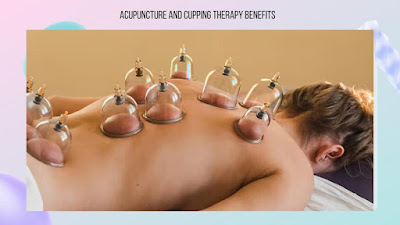Balancing Benefits and Tradeoffs: A Comprehensive Guide to Acupuncture and Cupping Therapy
Acupuncture, a traditional Chinese practice dating back over two millennia, has gained recognition worldwide for its potential to enhance health and well-being. In conjunction with acupuncture, cupping therapy has also garnered interest as a holistic approach to various health concerns. In this article, we will explore the factors influencing acupuncture and cupping, emphasizing their combined benefits, tradeoffs, and challenges. We will also stress the significance of considering the impact on when contemplating these therapies.
Understanding Acupuncture and Cupping Therapy
Acupuncture is based on the principle of balancing the body's vital energy, known as "qi," by inserting fine needles into specific points on the body. In contrast, cupping therapy involves placing cups on the skin to create a vacuum, facilitating improved circulation and reducing tension. Both practices aim to restore harmony and alleviate physical discomfort.
Benefits of Acupuncture and Cupping Therapy
1. Pain Relief: Acupuncture and cupping therapy are renowned for their potential to reduce pain, whether it's chronic or acute. These therapies stimulate the release of endorphins and promote relaxation, leading to relief in various conditions, including musculoskeletal pain and headaches.
2. Improved Blood Circulation: Cupping therapy enhances blood circulation, which can help speed up the body's natural healing processes. Better circulation can have a positive impact on overall health.
3. Stress Reduction: Both acupuncture and cupping can help reduce stress and anxiety by promoting relaxation. They can also improve sleep quality and mental well-being.
Tradeoffs
While acupuncture and cupping therapy offer multiple benefits, it's crucial to consider the tradeoffs and challenges:
1. Individual Response: Responses to both therapies can vary significantly among individuals. What works for one person may not have the same effect on another.
2. Time and Consistency: Acupuncture and cupping therapy often require multiple sessions to achieve lasting results. Consistency and patience are key to reaping the full benefits.
3. Cost: The cost of these therapies can add up, particularly if multiple sessions are needed. Insurance coverage for alternative treatments like acupuncture and cupping may be limited.
Challenges in Acupuncture and Cupping Therapy
Several challenges are associated with these therapies:
1. Lack of Scientific Consensus: While there is growing evidence supporting the effectiveness of acupuncture and cupping therapy, scientific consensus is still evolving. More research is needed to establish their efficacy conclusively.
2. Integration with Conventional Care: Deciding to incorporate acupuncture and cupping into your healthcare routine may require careful consideration and consultation with healthcare providers. Integrating these therapies with conventional care can be complex.
The Impact on Decision-Making
When considering acupuncture and cupping therapy, it's vital to make informed decisions. Consult with healthcare professionals who can evaluate your specific condition and provide guidance on the potential benefits and risks. A collaborative approach between your acupuncturist, cupping therapist, and medical team can ensure that your treatment plan is both effective and safe.
Conclusion
Acupuncture and cupping therapy, with their rich histories and potential benefits, offer a holistic approach to improving health and well-being. While they can alleviate pain, reduce stress, and enhance circulation, it is essential to consider the tradeoffs and challenges. Deciding to explore these therapies should be made thoughtfully, with the impact on your overall health and well-being at the forefront. Collaborating with healthcare professionals is crucial to ensure that your journey towards improved health is both effective and safe.

Post a Comment for "Balancing Benefits and Tradeoffs: A Comprehensive Guide to Acupuncture and Cupping Therapy"